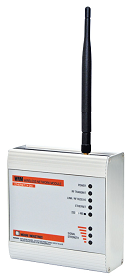 The operators of the Savannah Nuclear Site in South Carolina recently turned to Moore Industries to help them comply with new Department of Energy requirements relating to critical safety communications. Installing a system with the WNM Wireless Network Module and the NCS NET Concentrator System® allowed site engineers to use radio transmissions to send critical data across large distances without having to use costly wiring.
The operators of the Savannah Nuclear Site in South Carolina recently turned to Moore Industries to help them comply with new Department of Energy requirements relating to critical safety communications. Installing a system with the WNM Wireless Network Module and the NCS NET Concentrator System® allowed site engineers to use radio transmissions to send critical data across large distances without having to use costly wiring.
The site has a firewater tank that safety crews need to use for fire suppression in case there is an accident on the site. The DOE recently required the site to have the ability to instantly monitor the water level in the tanks from a main control room and back-up control room that are each one-half mile from the tank. Previously, engineers manually monitored the tank levels during on-site inspections and the system required hard wiring of around 100 yards.
Installing a hard wired system to connect the control rooms to the firewater tank would have required an extensive amount of expensive cabling, adding costs while also making the system more difficult to manage and maintain. Instead, the Savannah Nuclear Site’s operators opted to use WNMs and NCS systems to share the real-time levels of the firewater tanks via radio communications.
The installed system features inputs mapped to multiple outputs over serial radios. Local watchdog alarms were mapped to relay outputs at the control rooms. The watchdog warns operators if communications have been lost or if there is an issue with the levels. The end result is a reliable system utilizing wireless technology with the WNM providing a highly economical solution for radio communications.
Learn more about the WNM by visiting the Distributed I/O and Data Communications Systems section of our website or downloading the “Wireless Possibilities” white paper.
Nike Phantom Vision DF SG

 The operators of the Savannah Nuclear Site in South Carolina recently turned to Moore Industries to help them comply with new Department of Energy requirements relating to critical safety communications. Installing a system with the
The operators of the Savannah Nuclear Site in South Carolina recently turned to Moore Industries to help them comply with new Department of Energy requirements relating to critical safety communications. Installing a system with the